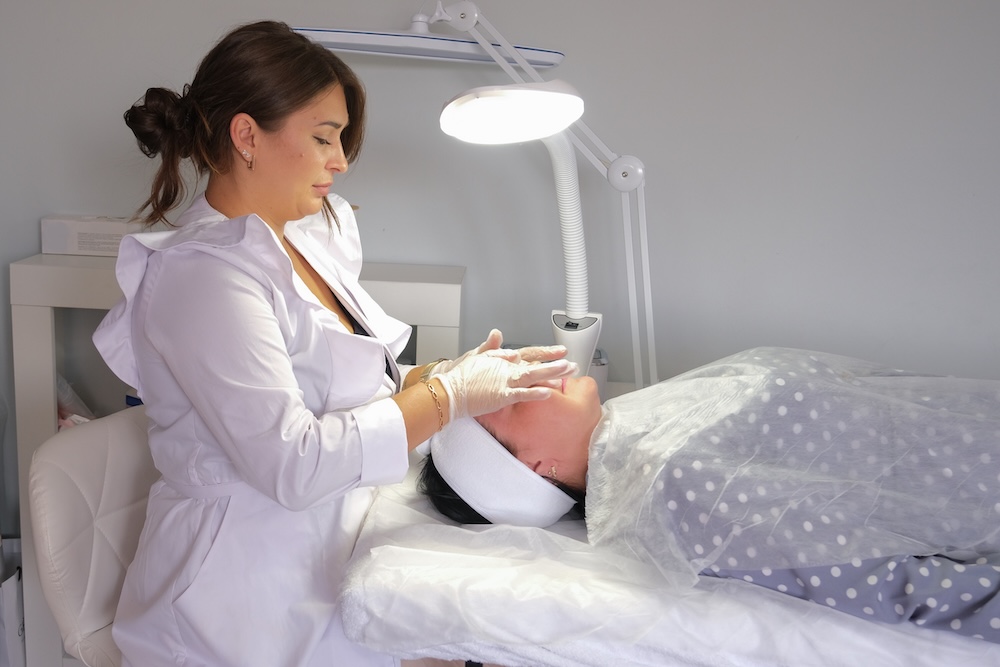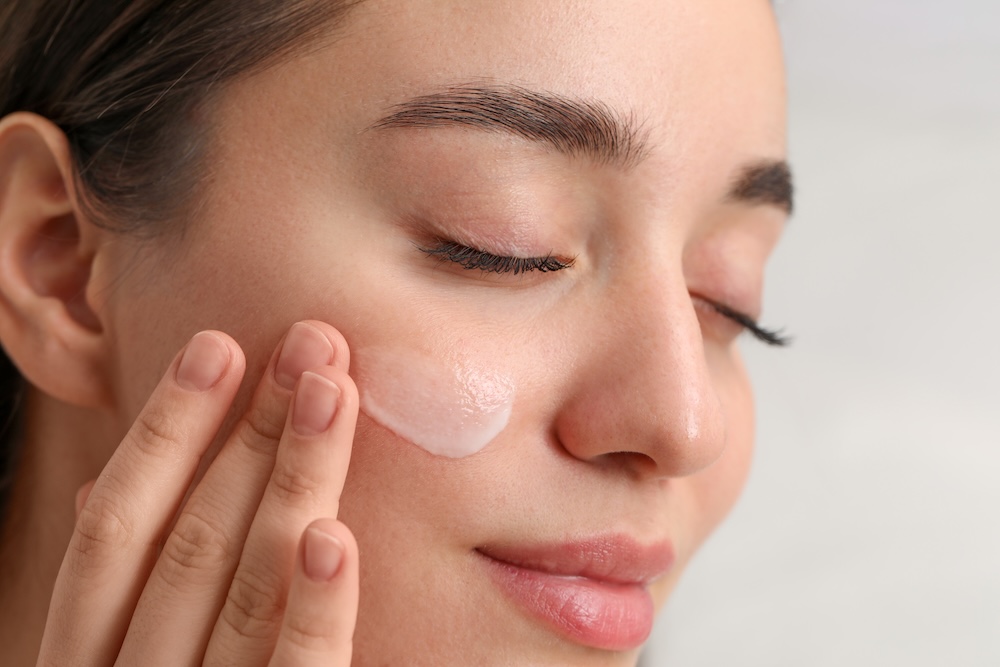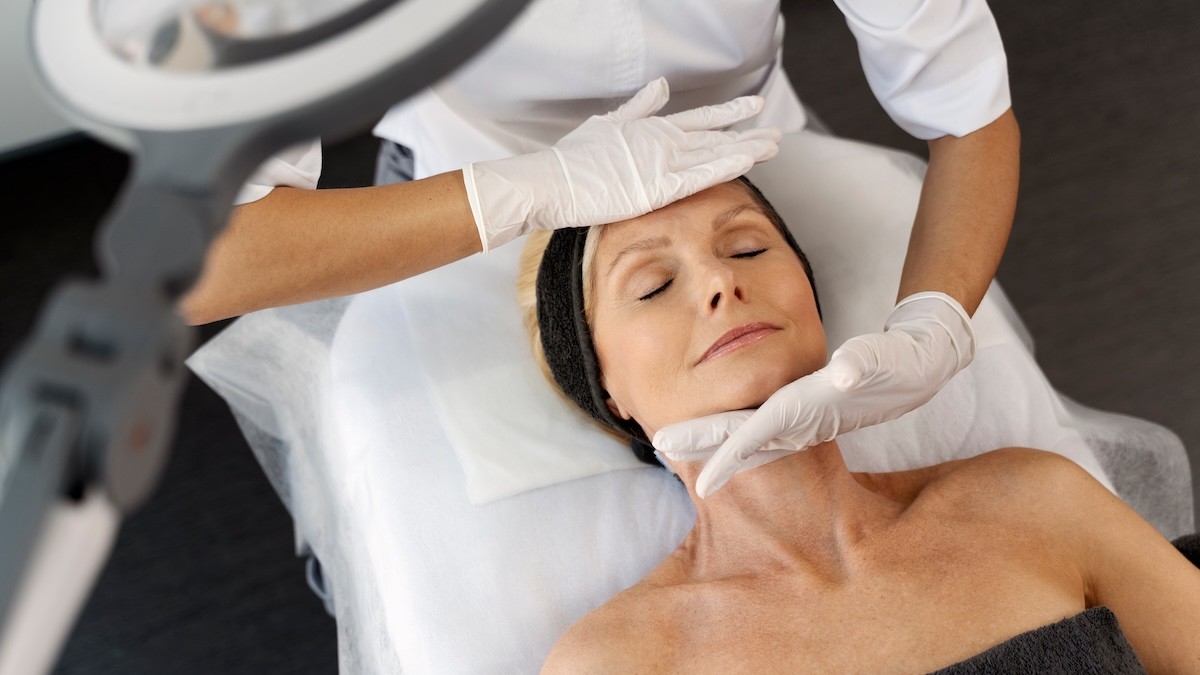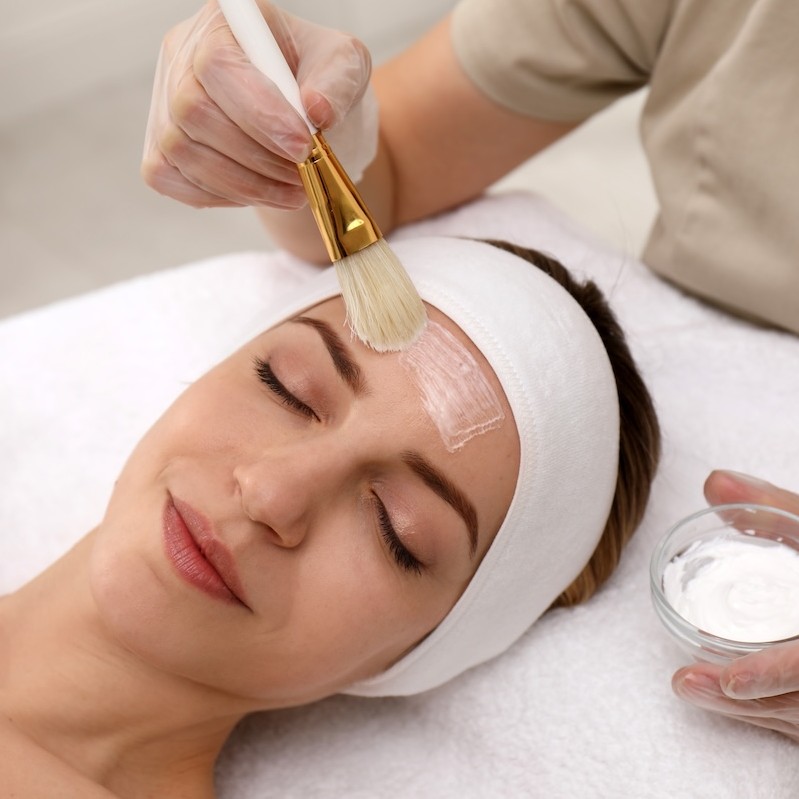As clients increasingly seek results-driven but non-invasive treatments, biomicroneedling has emerged as a powerful alternative to traditional microneedling
We speak to leading educators and skin experts about how spicules work, who they suit and why this needle-free technique is redefining skin regeneration.
What is biomicroneedling and how does it work?
Biomicroneedling is often described as nature’s version of microneedling – a regenerative treatment that stimulates the skin’s repair process without breaking the barrier.
“Biomicroneedling is a non-invasive skin rejuvenation treatment that uses natural needle-like structures called spicules, instead of the traditional metal microneedles,” explains Corinne Morley, lead trainer at Anesi Lab. “These microscopic spicules are derived from freshwater sponges called Spongilla.”
Gemma Halil, lead educator for pHformula UK and skin specialist at The Lodsworth Clinic, adds, “Spicules are microscopic structures that create controlled microchannels in the skin, mimicking the effects of microneedling but without the need for devices or actual needles. They enhance absorption of active ingredients and initiate a natural wound-healing cascade that leads to smoother, healthier-looking skin.”
Skin specialist Ashley Wady, director of SQT UK & Ireland, describes it as “a natural skin rejuvenation treatment that uses spicules from freshwater or marine sponges to gently stimulate the skin’s renewal process. The spicules act as nature’s micro-needles, encouraging the skin to renew itself from within while delivering ingredients deeper into the basal layer.”
Spicules: nature’s microscopic delivery system
Spicules are made primarily of silica and calcium carbonate, with a unique crystalline structure that interacts biologically with the skin.
“When massaged in, spicules create millions of invisible microchannels that reach the basal layer,” says Morley. “This activates the skin’s natural wound-healing response, promoting cell renewal and collagen synthesis.
"The spicules remain in the skin for over 48 hours, continuously stimulating the dermis and enhancing transdermal delivery of active ingredients.”
Wady adds, “Their porous, crystalline structure allows them to act as biological delivery drivers, facilitating the deep diffusion of peptides, vitamins and botanical extracts directly into the lower layers of the epidermis. This dual action of stimulation and absorption optimises treatment outcomes.”

How biomicroneedling differs from traditional microneedling
All three experts agree that while both treatments boost collagen production, the mechanisms and client experience are very different.
“Traditional microneedling uses fine, mechanical needles to create controlled micro-injuries on the skin’s surface, which can involve mild discomfort and downtime,” explains Wady.
“Biomicroneedling uses natural silica spicules massaged into the skin, creating millions of microchannels without puncturing the barrier. It’s more comfortable, natural and delivers faster visible results.”
Halil says, “Unlike traditional microneedling, there’s no bleeding, no anaesthetic and no recovery time. The skin responds in a gentler, more progressive way – cumulative and restorative rather than inflammatory.”
Morley highlights the longevity of stimulation: “While metal microneedles are immediately withdrawn, Spongilla spicules remain embedded in the skin, continuing to stimulate the dermis for hours post-application.”
The skin benefits of biomicroneedling
Biomicroneedling is known for improving texture, tone and clarity across multiple skin types.
“It visibly improves fine lines, uneven texture and hyperpigmentation, and offers an effective solution for acne-prone or congested skin,” says Morley.
According to Halil, “It’s particularly effective for clients seeking rejuvenation without the downtime of aggressive treatments, helping to refine texture, reduce pigmentation and restore radiance.”
Wady adds, “Because it works biologically, not mechanically, it’s suitable for most skin types, even sensitive skin. It helps with congestion, acne scarring, pigmentation and early signs of ageing, promoting smoother, clearer and more radiant skin naturally.”
When results appear, and how they build over time
Immediate glow aside, the regenerative process continues well after the treatment.
“Clients see visible improvements after just one treatment, with smoother, more even skin and a brighter complexion,” says Morley. “With a course of treatments, results continue to improve.”
Halil agrees: “Many clients notice plumper, more radiant skin after their first session. Over the following days, regeneration continues and firmness improves. With regular treatments, the results compound.”
Wady notes that “best results typically appear within seven days, with optimum collagen remodelling seen 8-12 weeks after the first session.”

Treatment experience: what clients can expect
The experts describe a biomicroneedling facial as a tingling, granular massage rather than a needling procedure.
“Clients can expect a gentle yet active experience,” says Morley. “The spicules are massaged into the skin, causing a mild prickling sensation that increases during application but remains comfortable.
“Post-treatment, the skin may appear pink or flushed and feel slightly warm. Downtime is minimal, with makeup typically allowed after 24 hours.”
Halil adds, “There’s no bleeding or pain, just a mild warmth and pinkness that subsides within hours. Most clients resume normal activities immediately.”
Wady describes it as “a fine exfoliating sensation that signals the spicules are activating beneath the surface. Some mild tightness or dryness can occur over the next 24-48 hours as the skin regenerates, but the overall glow develops within days.”
Who is (and isn’t) suitable for biomicroneedling?
Biomicroneedling is suitable for most skin tones and types, but consultation remains key.
“It’s best avoided on active acne, open lesions, or inflammatory conditions such as eczema or rosacea flare-ups,” says Halil. “A professional assessment ensures safe and tailored results.”
Morley adds, “It’s not suitable for clients with active skin infections, inflammatory disorders, or those undergoing medical treatments that impair healing.”
Wady notes, “It’s also not recommended during pregnancy or for clients using strong retinoids or exfoliants. Proper timing and professional guidance ensure comfort and effectiveness.”
Preparation, aftercare and supporting ingredients
Good preparation and post-care are essential for optimal results.
“Clients should discontinue exfoliants, retinoids and other actives prior to treatment, and avoid anything that compromises the barrier,” advises Morley. “Afterwards, use targeted products recommended by your therapist and avoid UV exposure completely.”
Halil agrees: “Hydration, SPF protection and barrier-supporting serums are vital after treatment to maintain results and enhance the skin’s healing response.”
According to Wady, “Post-treatment, focus on hydrating and barrier-restoring ingredients such as hyaluronic acid, ceramides, panthenol and peptides.
“Avoid strong actives like retinoids, AHAs or vitamin C for several days. Supporting the skin with gentle hydration ensures longer-lasting brightness and smoother texture.”

Training, pricing and positioning for professionals
For beauty therapists, biomicroneedling can be a lucrative and innovative treatment to introduce.
“Therapists should complete hands-on training with the spicule provider to ensure correct technique, safety and understanding of contraindications,” says Morley.
Halil agrees that “training is essential – professionals must understand spicule behaviour within the skin and how to integrate it safely into resurfacing programmes”.
Pricing tends to reflect its premium positioning. “Biomicroneedling can be priced slightly above traditional microneedling (around £150-£180 per session) reflecting its advanced technology and minimal downtime,” suggests Wady.
“It sits perfectly between classic facials and device-led procedures, appealing to clients seeking visible results without needles.”
Common misconceptions about biomicroneedling
One frequent myth is that biomicroneedling is less effective than traditional microneedling.
“In reality, it’s a completely different process,” says Wady. “Biomicroneedling works biologically, not mechanically. The spicules stimulate renewal through the skin’s own regenerative response, delivering advanced and targeted results without trauma.”
Halil adds, “Another misconception is that it replaces microneedling, but it actually complements it, offering a restorative option between needling cycles or for clients who can’t tolerate invasive methods.”
Morley cautions therapists against overtreating: “Treating too frequently or assuming a stronger sensation gives better results are common mistakes. With this treatment, less is more.”
Homecare spicules and maintenance
Spicule-infused homecare products are growing in popularity, offering clients a way to maintain results between professional sessions.
“Homecare spicule products offer a milder effect for daily use, helping to enhance absorption of actives and extend results,” says Morley.
Halil agrees, “Professional treatments deliver deeper penetration and stronger regeneration, while homecare supports longevity. The in-clinic experience remains the cornerstone of transformation.”
Wady summarises, “Professional treatments create transformation, while homecare ensures preservation and enhancement. Used together, they form a complete skin regeneration system.”
The future of skincare
Biomicroneedling reflects the beauty industry’s broader move toward bio-stimulation, or using the skin’s own biology to rejuvenate from within.
“It exemplifies the shift toward non-invasive, science-backed treatments that support skin longevity through natural regeneration rather than mechanical disruption,” says Morley.
Halil notes that “refinements in spicule purity and particle size are allowing for more precise, predictable results”.
And as Wady points out, “biomicroneedling fits perfectly into the UK’s evolving regulatory landscape. It’s safe, sustainable and aligns with the demand for low-downtime, scientifically backed treatments.”
You might also like:




